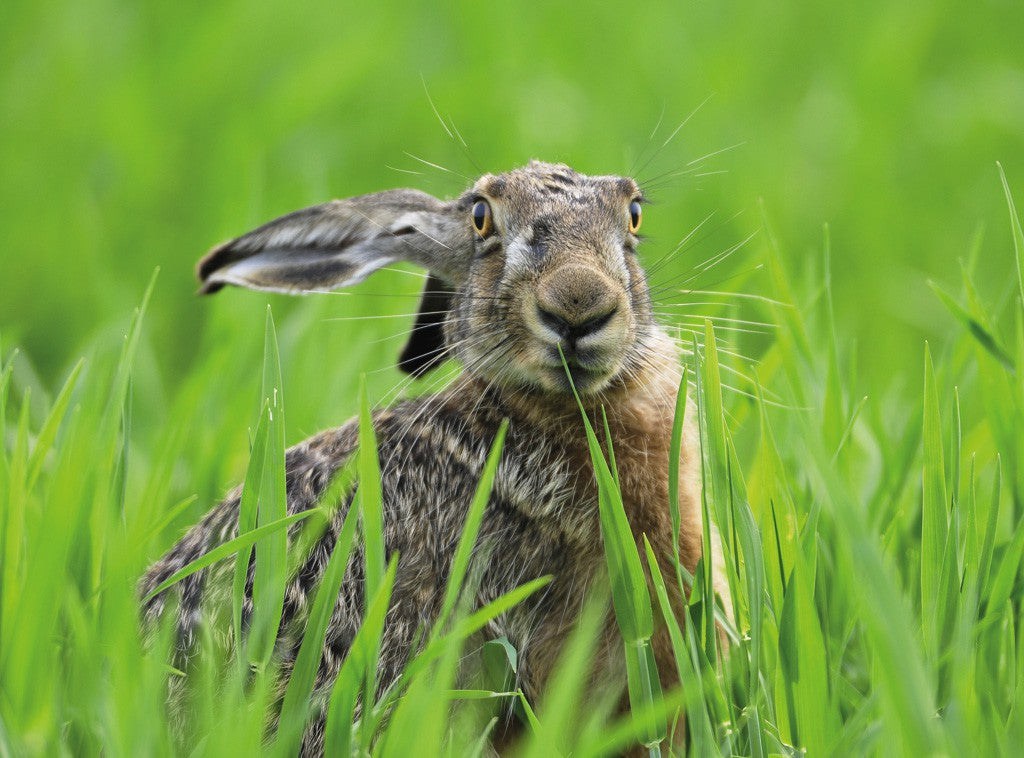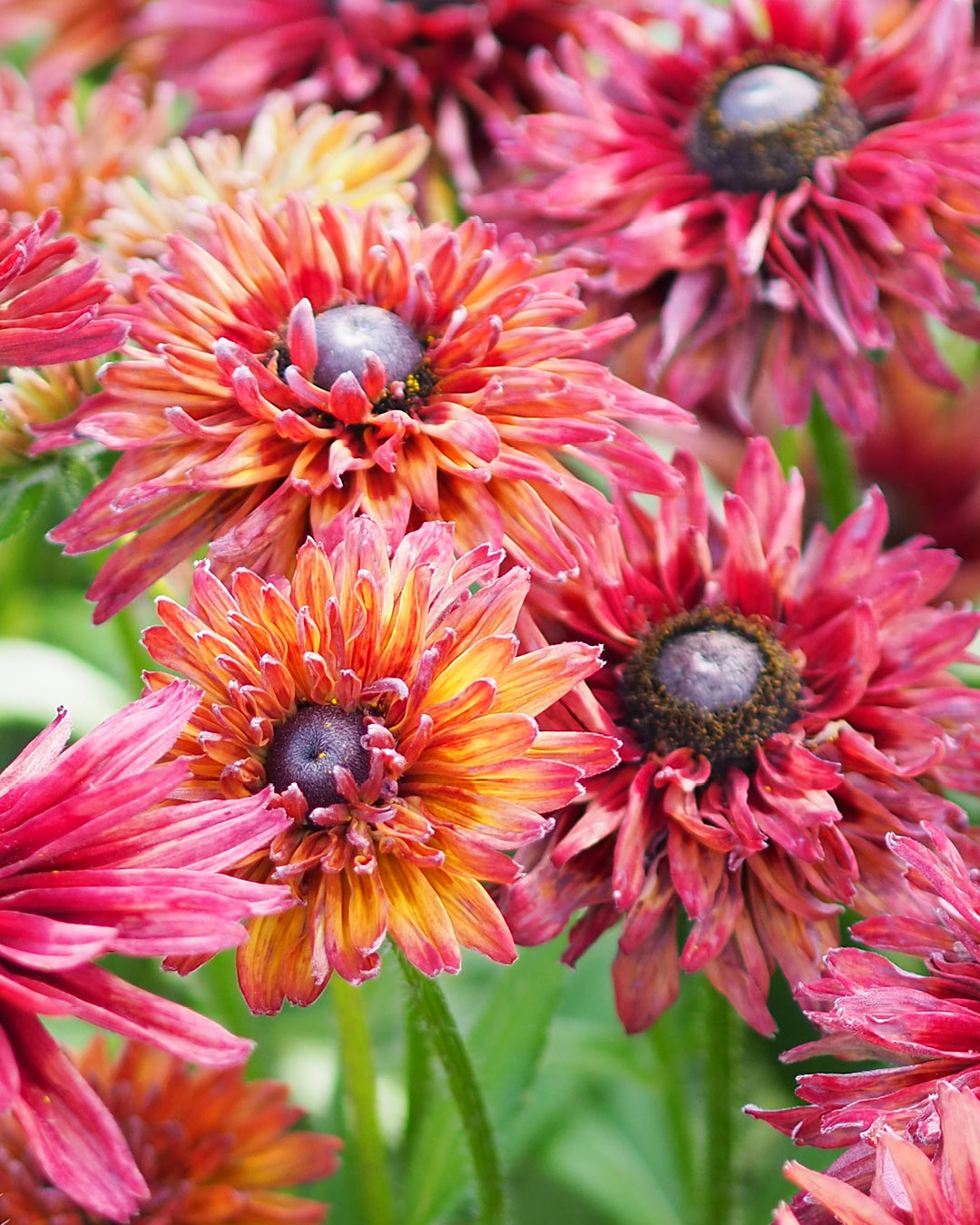My name is Hase
The hare doesn't have it easy. In our intensively cultivated landscape, there's not much room for Mr. Lamprey, but many hungry predators want to get their hands on their thick fur, and in autumn and winter, lead shot flies around their long ears. So, it's more than time for a plea for the hare.

Adapted to life on the steppe
Anyone who enjoys walking through meadows and fields will know the moment of shock when a hare bursts out of its hole, the burrow, right in front of you. Master Lampe then accelerates like a race car, reaching top speeds of up to 70 kilometers per hour, making swerves that would make even the most agile pursuer stumble, and effortlessly leaping over two-meter-high obstacles. The hare is actually a steppe animal. It thrives in a landscape that offers no tree cover. Its fur coloration provides perfect camouflage, even from the sharp eyes of large birds of prey. Its long legs are astonishingly muscular, allowing it to escape at high speed and change direction abruptly.
In the wake of the grazing animals
The European hare is a cultural follower. After the large, contiguous forests were cleared and converted into fields and pastures for livestock, new habitats emerged, even in our latitudes. Lush meadows with abundant wild herbs, fewer predators than in the steppe – the hare thrived. But Lepus europaeus, its scientific name, also owes its rapid spread to hunters. Roast hare is succulent, and hunting it became a prized social event in rural areas. As a result, it was released as game in many places and was able to colonize islands far from the European mainland.
Boxers, run and then ram
Hares like it warm. Only when our cold, often rainy winters come to an end does the hare community truly come to life again. It's time to take care of their offspring. The mostly solitary, secretive hares now also appear during the day, sitting together in groups, and getting caught up in a hormonal frenzy. The male hares, the bucks, engage in short, fierce boxing matches for the mating females. The winner then has to show the doe that he can stay on her heels in a sprint... and then the mating begins.
Nest-leavers and survivors
Hares can have up to four babies a year, usually two to three. Statistically, each female hare gives birth to about ten babies per year. Unlike rabbits, which give birth in the protection of a burrow, these young hares are born furry and able to see. They are precocial. To conserve energy and avoid detection by predators, they remain almost motionless, huddled together at the place of birth for the first few days. Later, they separate and only come together under the cover of dusk at a place chosen by the female for suckling. For 33 days, the female does feed her young with rich milk. Within this first month of life, the young increase in weight tenfold to about one kilogram. Nevertheless, mortality among young hares is high. Only two out of ten babies survive the first month. Birds of prey, foxes, martens, wild boars, dogs, and cats take their toll, as do cold, rain, disease, and rotary mowers.
Less and less to bite
Hares prefer the above-ground, usually protein-poor parts of flowers and grasses. After the hare's food has passed through the stomach, it enters the greatly enlarged cecum. Here, bacteria and other microorganisms begin to digest the plant residue. This creates a pulp that is very valuable to the hare, which it ingests immediately after excretion; without it, it would quickly die. The hare does not tolerate the rich, green grass that today grows almost exclusively on fertilized pastures. But the areas where they can still provide themselves with a healthy mix of herbs and grasses are shrinking. The rapidly increasing cultivation of maize for energy production in biogas plants is robbing the long-eared hare of important habitats. Environmental organizations such as the WWF are therefore calling for a change in agricultural policy and greater consideration of ecological concerns in land use.
Only in the north are there still many rabbits
While for a long time, hare populations were estimated solely based on hunting numbers, Schleswig-Holstein has had a well-functioning hare census in 70 selected hunting areas since 2002. At night, a spotlight is shone over the fields. If you see just one eye flashing, you can be sure it's a brown hare. Foxes, deer, and all other nocturnal wild animals look directly into the light source, and you can see a pair of eyes. The result: In northern Germany, Mr. Lamprey is still doing relatively well. In many other regions of Germany, the long-eared bat has long since disappeared. A lamentable state of affairs that led to the brown hare being placed on the endangered species list in 1994.
Rabbits in the garden
Rabbits don't just come into our gardens to hide eggs. Hunger usually makes them forget their shyness. In winter, they gnaw on the bark of trees and shrubs. If you don't want their razor-sharp bunny teeth digging into your well-tended fruit trees, leave shrub clippings for the rabbit to scrape and nibble on. Starting in spring, the table outside the garden gate should actually be richly laid. Often, it's not rabbits that feed on our garden plants, but wild rabbits. These smaller relatives cope much better with proximity to humans and even make use of inner-city green spaces.
That shines like a lamp
So how did the hare get its fabulous name "Master Lamp"? Even in ancient times, stories were written down in which animals played the main role. A hare named Lamprecht repeatedly appeared in medieval fables. The name Lampe may have originated from this first name. The fact that the light fur of the hare's hindquarters is clearly visible, almost glowing, during a sprint is also said to have contributed to the "lamp" name.
No way cheeky and fearful
The mythical creature Lamprecht was described as cheeky and fearful. A disgrace, considering how bravely female rabbits defend their young. The hare's wailing, a pitiful squeak, is also supposed to summon fellow rabbits to help when things get tough. Anyone who's ever seen a bewildered dog get punched in the nose by an angry rabbit will see the Mümmelmann in a different light.
60 years of global seasonal work
The idea that rabbits paint eggs before Easter, sneak into gardens, and hide cholesterol bombs so that children can have a great time on Easter Sunday is an old one. However, as recently as the middle of the last century, there was a regional division of labor. In Switzerland, the cuckoo brought the eggs, there was the Easter fox, and in many places, the rooster also brought his offspring to the people. It was probably the chocolate bunny industry that insisted that the rabbit become the monopolist for the delivery of Easter eggs.
I take my hat off to this adaptable, courageous, hardworking and unfortunately endangered mammal!















